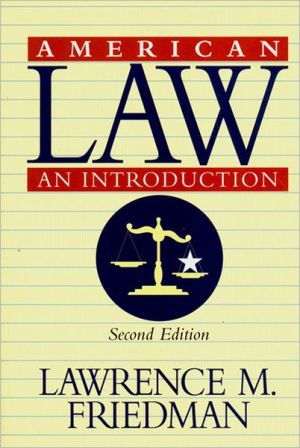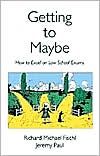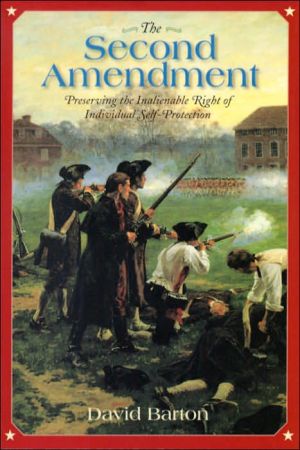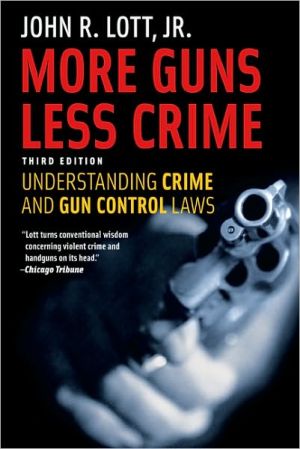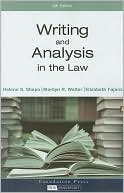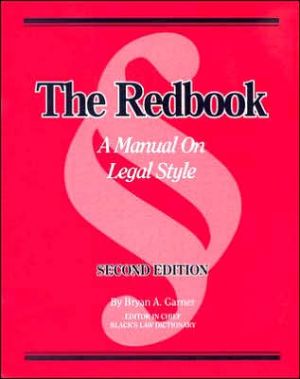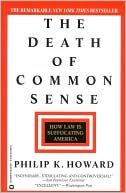American Law: An Introduction
Lawrence Friedman now offers a revised and updated edition of his comprehensive introduction to the American legal system. Rich in anecdote and historical detail, this invaluable book makes the bewildering complexity of American law understandable to us all. It explains how laws are made, from the United States Constitution to the small-town zoning board, and how law is administered by courts and agencies at every level of government. It describes the tremendous variety of law: antitrust law,...
Search in google:
Lawrence Friedman now offers a revised and updated edition of his comprehensive introduction to the American legal system. Rich in anecdote and historical detail, this invaluable book makes the bewildering complexity of American law understandable to us all. It explains how laws are made, from the United States Constitution to the small-town zoning board, and how law is administered by courts and agencies at every level of government. It describes the tremendous variety of law: antitrust law, family law, torts (the law of accidents), criminal justice, rules for packaging medicine and food. And it brilliantly explores important trends to reveal the way changes in law mirror, and sometimes guide, changes in society. Lief Carter Imagine the finest Swiss clock-maker assembling an extraordinarily complex and accurate and massive timepiece, and you will have imagined the craft of Friedman's revised and updated classic. This work, by one of this country's leading legal historians/sociologists, describes in a straightforward style just about every component of law in action that any lay student could possibly want or need to know. The chapters loosely fit a quasi-Parsonian style. American law is a legal system (defined in Chapter One). While people do much law informally, all complex human organization requires a formal legal system (Chapter Two). This system has structural elements: Courts and adjudication (Chapter Four), statute-making and interpretation (Five), administrative execution of policy (Six), all inlaid in a federalist political structure and culture (Seven). Chapters Eight through Ten review the legal substance of tort and contract law, crimes and punishments, and constitutional law and civil liberties. The remaining four chapters treat legal behavior, legitimacy and morality, the American legal profession, and law and social change. This last chapter, one of the book's best, focuses on changes in race relations and, more grippingly, on changes in the legal treatment of marriage, including palimony and same-gender marriages. The book concludes with 50 pages of wonderfully varied primary legal materials: Portions of the Constitution and the constitution of Oregon, the Sherman Antitrust Act, the Food, Drug, and Cosmetic Act, the Civil Rights Act of 1964, Title VII (as amended), the Idaho Workmen's Compensation Law, California's Structural Pest Control Board Law, some FDA, EEOC, and California pest control regulations, and six judicial decisions, including Brown v. Board, Hopwood v. Texas, and an Idaho workmen's compensation case. (This last opinion couches the dramatic on-the-job shooting of a Chinese-American dishwasher in the most pedantic legal rhetoric possible, a suggestive point in itself.) The meticulous index alone suggests this book's reach and scope. Browsing virtually at random, we find, under M, the sequence: Missouri plan, Montana, vigilantes in, MOON IS BLUE, THE, morality, and Mormons. P produces, in order, plumbers, licensing of, pluralism and legal behavior, Plymouth Colony, police, polygamy, popular justice, pornography, Posner, Richard, postal service administration, precedent, doctrine of, preliminary examination, primogeniture in colonial period, and prisoners' rights movement. For experienced teachers in virtually every area of law, Friedman offers a refreshing escape from theory and argument into a world of factual old friends, e.g. a nice vignette nesting the CHARLES RIVER BRIDGE case in 19th century law and economics (pp. 69-70), and new acquaintances, e.g., some delicious examples of private bills (p. 114). The very satisfactions that this book provides us teachers familiar with the field do flash caution lights when we consider assigning this book to undergraduates. AMERICAN LAW resembles a comprehensive book about painting, containing fascinating stories of artists' lives, the social backgrounds and political, social, and economic consequences of works of art, and the social structures that create them, but very little about how to paint. Friedman, for example, has only a brief and inconclusive description of statutory interpretation, and no entry for legal reasoning in the index. The book reviews judicial behavior literature and soundly concludes (p. 101) that the "results are not terribly exciting," but the politics of law in action is at best muted in this book. Paintings are beautiful, and people may devour books on painting and painters because they learn thereby more about the objects of their affection. Justice is beautiful, too, but Friedman writes about law, not justice, and law is, sadly, not Giotto or Bracque. So, while I can imagine pre-law students of conscientious and intellectually inquisitive minds devouring this book, I do wonder whether there is a robust undergraduate market beyond that. The book is so dense and catholic (only two pages in Chapter Nine separate the 1655 sentencing of Cornelius Hulett for fornication in Salem to 1971 New York City statistics on felony complaints unsolved, pp. 187-189) that I suspect that the typical undergraduate may lack any contemporary framework within which to fit all the information here into a useful story. Despite his caveats, Friedman's realist orientation to the "thingnesses" and "isnesses" of law create a misleadingly mechanistic and impersonal subtext. One might of course attribute the difficulties to the fact that the legal system is not a timepiece, and that Friedman's immense and admirable craft is outdated. But craft is never outdated. The problem is that the book is no longer the ideal medium by which to deliver this information. I have never read a book that so struck me as ideal for delivery via an interactive CD-ROM as this one. Friedman's ideal timepiece IS the CD-ROM. The reader who could at a click connect the many but separated references to Mormons, or to capital punishment, or juries and jurors, or studies of judicial behavior, or Supreme Court cases (by term or decade, perhaps, as well as by topic) would then fully appreciate the work of art that Friedman has once more created. This in addition to the wit that the pages themselves do so generously give us.
Acknowledgments7Preface91What Is a Legal System?152Law: Formal and Informal353The Background of American Law524The Structure of American Law: The Courts755The Structure of American Law: Statutes and Statute Makers1086The Structure of American Law: Executing Policy1287Federalism and American Legal Culture1468Inside the Black Box: The Substance of Law1639Crimes and Punishments18010Constitutional Law and Civil Liberties20711On Legal Behavior23112Legal Culture: Legitimacy and Morality25213The American Legal Profession26714Law and Social Change29215Epilogue: The Future of Law in the United States321Documents333Notes383Index401
\ Lief CarterImagine the finest Swiss clock-maker assembling an extraordinarily complex and accurate and massive timepiece, and you will have imagined the craft of Friedman's revised and updated classic. This work, by one of this country's leading legal historians/sociologists, describes in a straightforward style just about every component of law in action that any lay student could possibly want or need to know. The chapters loosely fit a quasi-Parsonian style. American law is a legal system (defined in Chapter One). While people do much law informally, all complex human organization requires a formal legal system (Chapter Two). This system has structural elements: Courts and adjudication (Chapter Four), statute-making and interpretation (Five), administrative execution of policy (Six), all inlaid in a federalist political structure and culture (Seven). Chapters Eight through Ten review the legal substance of tort and contract law, crimes and punishments, and constitutional law and civil liberties. The remaining four chapters treat legal behavior, legitimacy and morality, the American legal profession, and law and social change. This last chapter, one of the book's best, focuses on changes in race relations and, more grippingly, on changes in the legal treatment of marriage, including palimony and same-gender marriages. The book concludes with 50 pages of wonderfully varied primary legal materials: Portions of the Constitution and the constitution of Oregon, the Sherman Antitrust Act, the Food, Drug, and Cosmetic Act, the Civil Rights Act of 1964, Title VII (as amended), the Idaho Workmen's Compensation Law, California's Structural Pest Control Board Law, some FDA, EEOC, and California pest control regulations, and six judicial decisions, including Brown v. Board, Hopwood v. Texas, and an Idaho workmen's compensation case. (This last opinion couches the dramatic on-the-job shooting of a Chinese-American dishwasher in the most pedantic legal rhetoric possible, a suggestive point in itself.) The meticulous index alone suggests this book's reach and scope. Browsing virtually at random, we find, under M, the sequence: Missouri plan, Montana, vigilantes in, MOON IS BLUE, THE, morality, and Mormons. P produces, in order, plumbers, licensing of, pluralism and legal behavior, Plymouth Colony, police, polygamy, popular justice, pornography, Posner, Richard, postal service administration, precedent, doctrine of, preliminary examination, primogeniture in colonial period, and prisoners' rights movement. For experienced teachers in virtually every area of law, Friedman offers a refreshing escape from theory and argument into a world of factual old friends, e.g. a nice vignette nesting the CHARLES RIVER BRIDGE case in 19th century law and economics (pp. 69-70), and new acquaintances, e.g., some delicious examples of private bills (p. 114). The very satisfactions that this book provides us teachers familiar with the field do flash caution lights when we consider assigning this book to undergraduates. AMERICAN LAW resembles a comprehensive book about painting, containing fascinating stories of artists' lives, the social backgrounds and political, social, and economic consequences of works of art, and the social structures that create them, but very little about how to paint. Friedman, for example, has only a brief and inconclusive description of statutory interpretation, and no entry for legal reasoning in the index. The book reviews judicial behavior literature and soundly concludes (p. 101) that the "results are not terribly exciting," but the politics of law in action is at best muted in this book. Paintings are beautiful, and people may devour books on painting and painters because they learn thereby more about the objects of their affection. Justice is beautiful, too, but Friedman writes about law, not justice, and law is, sadly, not Giotto or Bracque. So, while I can imagine pre-law students of conscientious and intellectually inquisitive minds devouring this book, I do wonder whether there is a robust undergraduate market beyond that. The book is so dense and catholic (only two pages in Chapter Nine separate the 1655 sentencing of Cornelius Hulett for fornication in Salem to 1971 New York City statistics on felony complaints unsolved, pp. 187-189) that I suspect that the typical undergraduate may lack any contemporary framework within which to fit all the information here into a useful story. Despite his caveats, Friedman's realist orientation to the "thingnesses" and "isnesses" of law create a misleadingly mechanistic and impersonal subtext. One might of course attribute the difficulties to the fact that the legal system is not a timepiece, and that Friedman's immense and admirable craft is outdated. But craft is never outdated. The problem is that the book is no longer the ideal medium by which to deliver this information. I have never read a book that so struck me as ideal for delivery via an interactive CD-ROM as this one. Friedman's ideal timepiece IS the CD-ROM. The reader who could at a click connect the many but separated references to Mormons, or to capital punishment, or juries and jurors, or studies of judicial behavior, or Supreme Court cases (by term or decade, perhaps, as well as by topic) would then fully appreciate the work of art that Friedman has once more created. This in addition to the wit that the pages themselves do so generously give us.\ \
